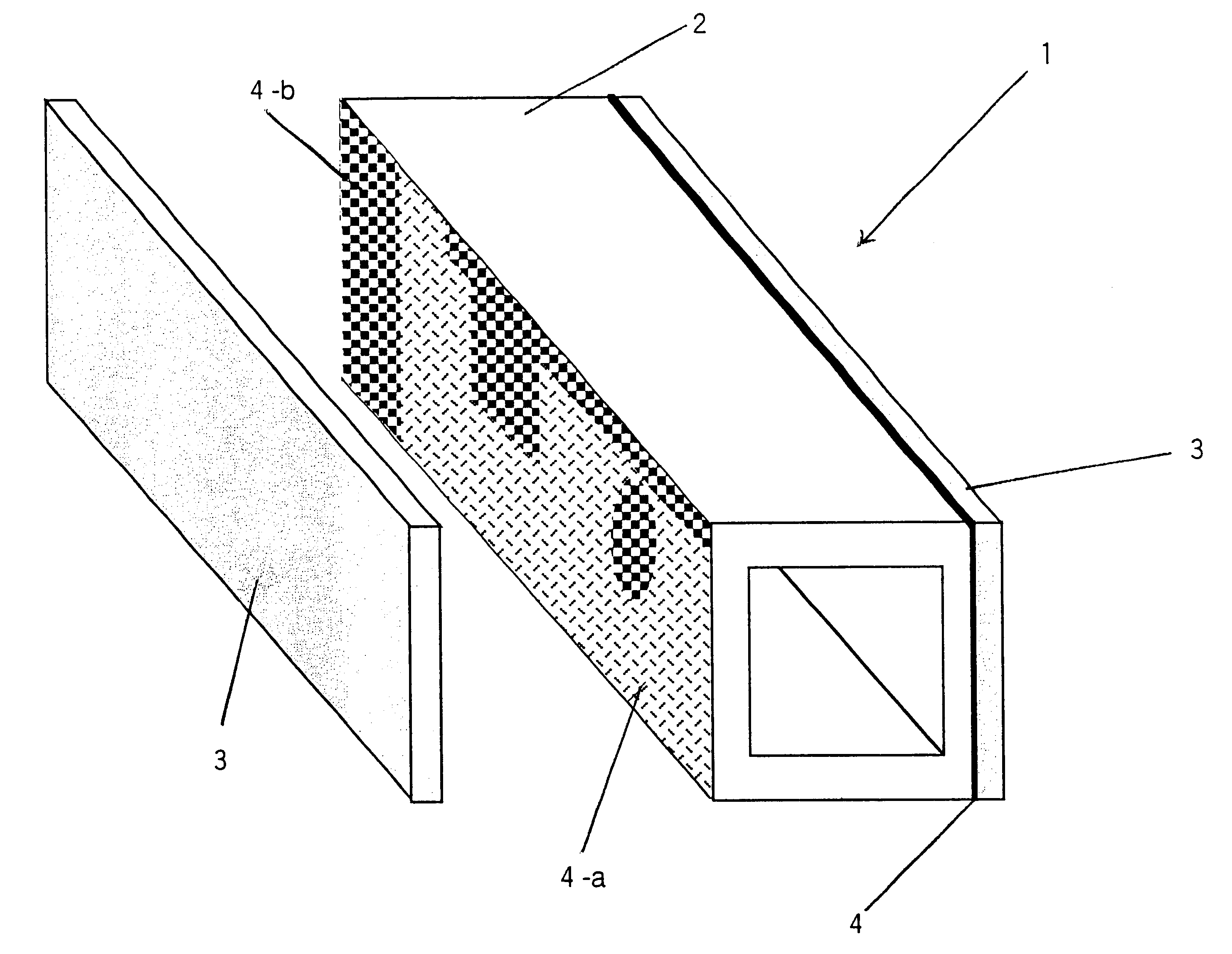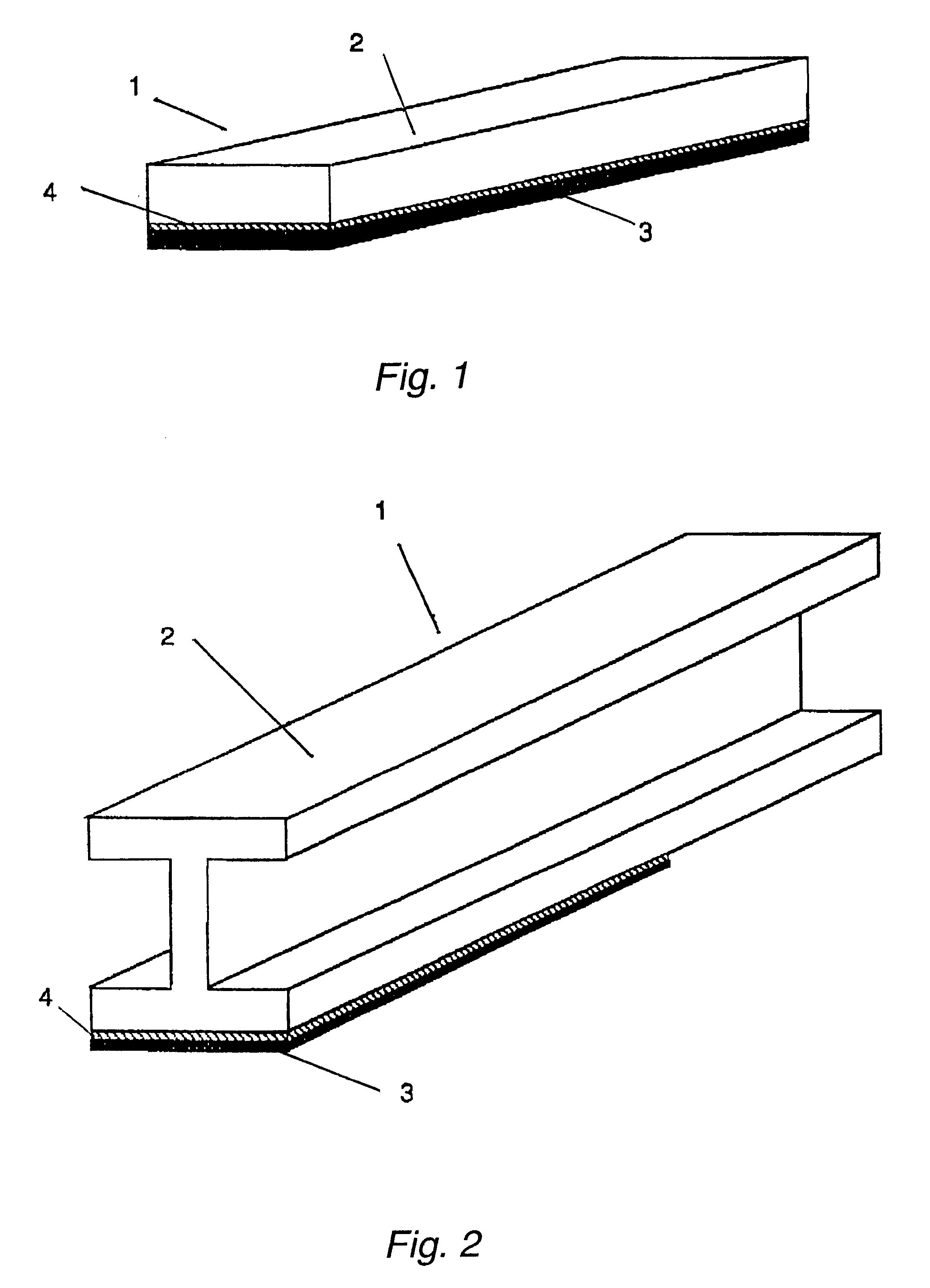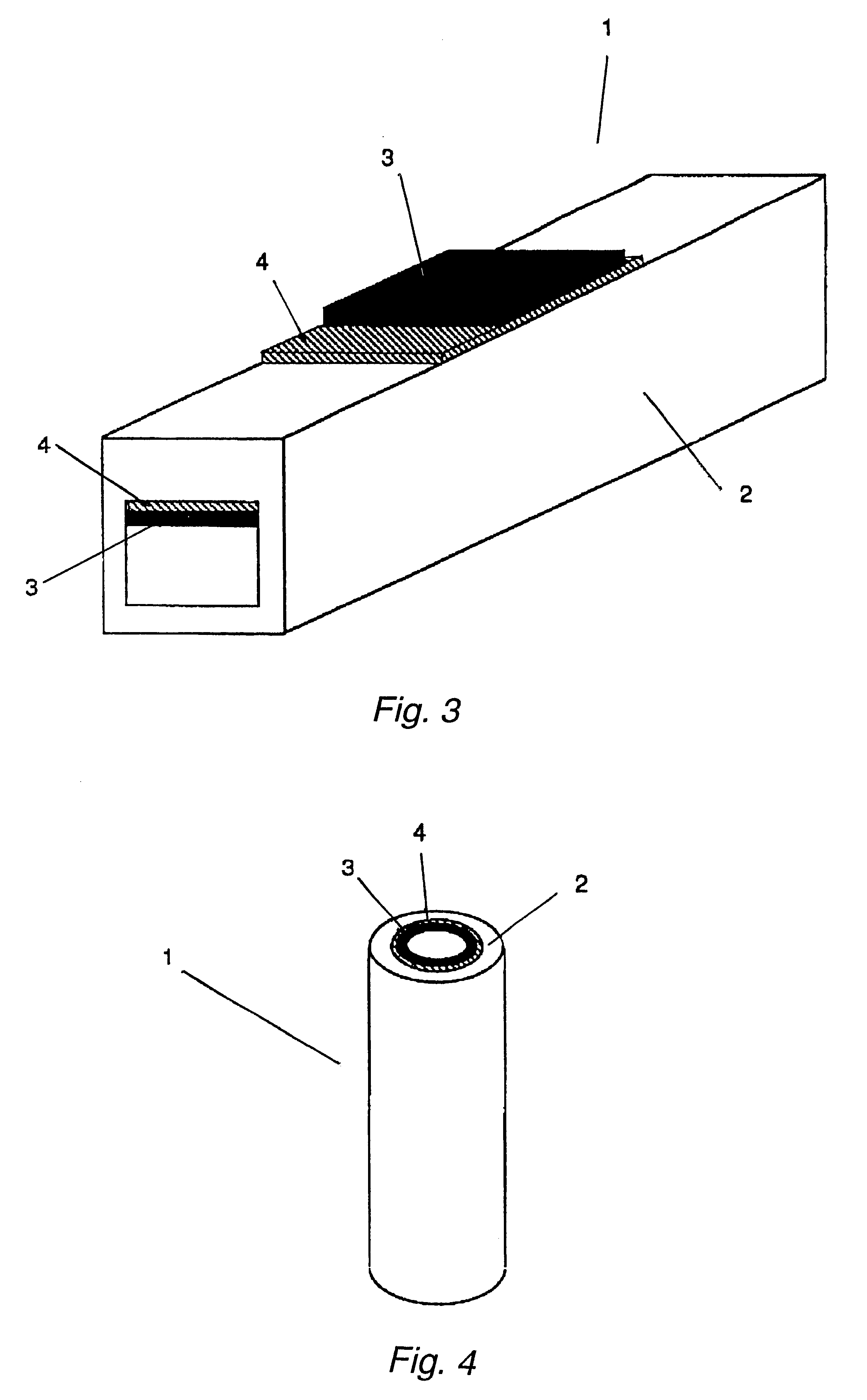Light metal/CFRP structural member
a structural member and metal technology, applied in the field of light metal/cfrp structural members, can solve the problems of reducing the merit of using aluminium sections, unforeseen damage to the member, and achieving as much weight reduction
- Summary
- Abstract
- Description
- Claims
- Application Information
AI Technical Summary
Benefits of technology
Problems solved by technology
Method used
Image
Examples
example 1
An epoxy resin matrix CFRP (carbon fibre volume content 60%, single fibre fineness 6.7.times.10.sup.-5 g / m, thickness 150 .mu.m) in which the reinforcing fibre was carbon fibre of tensile strength 3.5 GPa and elastic modulus 230 GPa was stuck to the upper and lower faces of an aluminium sheet (type 1050) of thickness 2 mm via a cold curing type epoxy resin of thickness 50 .mu.m (volume resistivity 1.times.10.sup.16 .OMEGA..cm), and an aluminium / CFRP section of thickness 2.4 mm obtained (FIG. 1).
When this section was cut to a width of 25 mm, and subjected to a 3-point bending test at a 650 mm span, the strength was 1.6 GPa. Furthermore, the weight was 150 g / m.
Again, when this section was left for 5 years in a humidity-controlled chamber (temperature 23.degree. C., relative humidity 55%), absolutely no galvanic corrosion was observed.
Furthermore, when this section was left outdoors, no galvanic corrosion was observed after 1 month. The volume resistivity of this adhesive agent when mo...
example 2
A 6063 aluminium alloy sheet of thickness 5 mm and a carbon fibre reinforced epoxy resin moulded sheet of thickness 1 mm (carbon fibre strength 4.9 GPa, carbon fibre elastic modulus 235 GPa, volume content of the carbon fibre 60%) were stuck together using a cold curing type epoxy resin adhesive agent to which 0.4 part of silane coupling agent had been added, at a layer thickness of 20 .mu.m.
The volume resistivity of this adhesive agent measured based on JIS K6911 was 4.times.10.sup.15 .OMEGA..cm, and the volume resistivity when moisture had been absorbed (after leaving for 40 days in a constant temperature constant humidity tank at a temperature of 65.degree. C. and relative humidity of 80%) was 5.times.10.sup.13 .OMEGA..cm. Right after curing, the adhesive strength at 23.degree. C. and at 60.degree. C. (test method, JIS K6850) was 18 MPa and 12 MPa respectively.
Subsequently,. after leaving in a constant temperature constant humidity tank at a temperature of 65.degree. C. and relat...
example 3
Aluminium alloy sheet and carbon fibre reinforced epoxy resin moulded sheet identical to those in Example 2 were stuck together using a cold curing type epoxy resin adhesive agent containing silica particles and alumina powder (5 wt % and 3 wt % respectively), at a layer thickness of 50 .mu.m. The secondary particle diameter of the silica particles was 30 .mu.m and the particle diameter of the alumina powder was 30 .mu.m.
When the volume resistivity of this bonded member was measured with or without having absorbed moisture based on JIS K6911 in the same way as in Example 2, the results were 5.times.10.sup.14 .OMEGA..cm and 3.times.10.sup.10 .OMEGA..cm respectively. Furthermore, right after curing the adhesive strength at 23.degree. C. and at 60.degree. C. (test method, JIS K6850) was 16 MPa and 10 MPa respectively.
Subsequently, in the same way as in Example 2, after leaving for 30 days in a constant temperature constant humidity tank at a temperature of 65.degree. C. and relative hu...
PUM
| Property | Measurement | Unit |
|---|---|---|
| Time | aaaaa | aaaaa |
| Pressure | aaaaa | aaaaa |
| Pressure | aaaaa | aaaaa |
Abstract
Description
Claims
Application Information
 Login to View More
Login to View More - R&D
- Intellectual Property
- Life Sciences
- Materials
- Tech Scout
- Unparalleled Data Quality
- Higher Quality Content
- 60% Fewer Hallucinations
Browse by: Latest US Patents, China's latest patents, Technical Efficacy Thesaurus, Application Domain, Technology Topic, Popular Technical Reports.
© 2025 PatSnap. All rights reserved.Legal|Privacy policy|Modern Slavery Act Transparency Statement|Sitemap|About US| Contact US: help@patsnap.com



